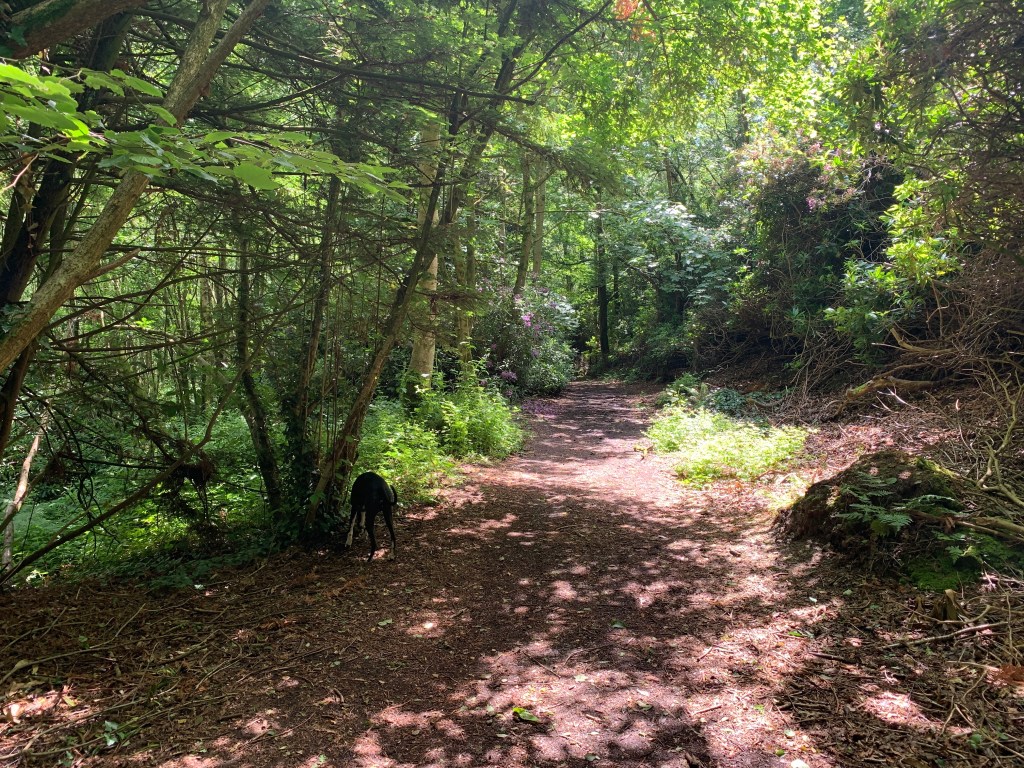
At the far end of Teignmouth, the town where I live in Devon, there is a large park with three names. Eastcliff, the Rowdens and Mules Park combine to make up what is a magical space of grass meadow, woodland path, shady pond, walled garden, community orchard and flower border. Cherry, ancient oak and chestnut trees are in full leaf right now. Nonetheless, it was the poppies that stopped me in my tracks.
Abundant ruffles of pink, crimson, scarlet, violet and white sprawled across the bank. I whipped out my phone to capture them before they took wing in the wind. I wondered who had planted them so cleverly, knowing with a sure gardener’s eye that their dizzying display would one day stop people in their tracks. Who took the trouble to do this? And why?
Community gardens are one of the loveliest things I can imagine. No gardener myself (I make do with a few pots) I appreciate the work that goes into creating something so naturally beautiful it looks effortless. As I roamed my eye over the bank, and saw the little pathways woven through the display, I felt a surge of admiration for the mind that thought this through. No tribute was needed except my appreciation.
 Reading Annie Dillard’s slim volume: The Writing Life, I came across this quote from Plato, which asks the ultimate ‘what if’ question. What if we could see beauty without having to judge it? Without having to compare it to something else? Without metaphor or comparison or concept? What if, we could just stand before beauty, and allow it to show its true face. What then?
Reading Annie Dillard’s slim volume: The Writing Life, I came across this quote from Plato, which asks the ultimate ‘what if’ question. What if we could see beauty without having to judge it? Without having to compare it to something else? Without metaphor or comparison or concept? What if, we could just stand before beauty, and allow it to show its true face. What then?
Children know how to do this. Living closer to a state of wonder than jaded adults, who have seen too many extravagant bouquets to be moved, a child sees the universal in a delicious new buttercup or dandelion clock. As adults, we’re a bit more picky. We prefer peonies to poppies, roses to ragwort (those pesky weeds!) and congratulate ourselves on our discernment. We know what we like. We admire good taste. Whereas, Beauty Itself, Pure Beauty is nowhere to be found in our carefully cultivated consciousness.
I know formal gardens do not move my imagination in the way a bank of poppies tripping all over themselves with brightness makes me want to party with them, soak up their spirited splendour, their casual look-at-me I haven’t really bothered to dress up vibe. Perhaps it’s because stripped of all pretension, the poppy is a humble flower, which doesn’t need much looking after, which in its low-key way creates a sense of freedom and possibility.
The ephemeral beauty of the poppy is, of course, why we have turned them into symbols of hope. The poppy flings its seed into the hardest, saddest and most painful places on earth. The poppy flourishes on grit. Out of this dark grittiness, emerges the idea of Beauty Itself which does not care what has occurred or whether its presence is welcomed or even noticed.
After Warsaw was ground down to dust during the final acts of destruction from the occupying forces, the local women waited for silence before they emerged with tiny pots of plants or flowers, carefully nurtured during the darkest time in Polish history. The women arranged the plants on doorsteps of homes that were now piles of rubble. While the ruined city heaved under the onslaught, the flowers showed their faces to the sun. What this taught me was that Beauty does not acknowledge brutality. Beauty surpasses pain or grief or torture. Beauty endures and cannot be destroyed.
What if we could be as carelessly unconcerned as simple plants in offering to the world our own unalloyed beauty? What if we could turn our faces to the light without stopping to consider who might be admiring us? What if we could drop our vanity and know that our own moral beauty needs nothing except a few rocky places on which to sow its seed?

